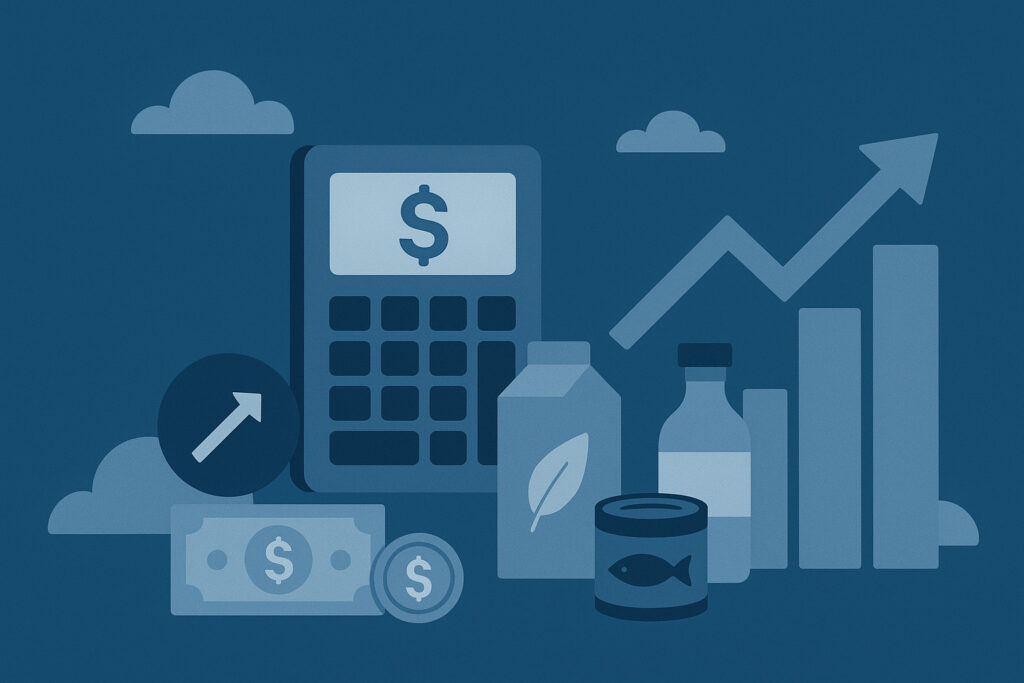BLOG
The Biggest Error Small Businesses Make About Credit Card Fees
4 min. read


May 12, 2020
It amazes me how, in 2020, so many small business owners don’t take advantage of credit cards, despite the fact that most people I know don’t carry much cash anymore or that – according to many surveys like this one – most consumers prefer to pay with a credit card. Some business owners just stick to their guns. Why? For the most part it’s about fees. “The credit card fees are just too high,” one client tells me. “My suppliers don’t even accept credit cards because they don’t want to pay the fees either,” another will say.
So it’s credit cards fees that are to blame, right? Nope.
Yes, credit card fees aren’t cheap. Sure, they can be as high as 3-5% on a transaction. But if you’re not using or accepting credit cards for this reason, then you’re making an enormous error. Of course, those costs – particularly in a business with tight margins – would have a huge impact on profitability. Unfortunately the business owners that take this position are forfeiting more profits than they think because they don’t fully understand how to easily recoup these fees.
First, let’s look at accepting credit cards for sales.
A credit card fee on a single sale can be expensive. But if you were to track your credit card fees across all sales in your business – credit or not – you’ll find that this cost, as a percentage of sales – is much, much lower. Probably closer to one percent. Which means that if you were to charge just one percent more on your sales across the board (or instead reduce the cost of something else by one percent) you would be able to accept credit cards for all sales and the small price increase (or cost reduction) would easily cover the additional credit expenses you’re paying.
Don’t want to go to all that effort? OK, then instead of not accepting credit cards or limiting the use of credit cards for purchases under a certain dollar amount, instead apply a simple surcharge. If a customer walks into a retail store and wants to pay $2.00 for a bag of chips would that same customer walk away if you were to charge her $2.10, which would be a five percent surcharge, an amount easily sufficient to cover your credit card fees? Let’s say there’s even an added transaction fee. Would that same customer pay $4.00 instead of $2.00 so that she can use her credit card? Some may not. But many would, if only for the convenience and to avoid having to hunt down that bag of chips elsewhere.¬† It amazes me how many small merchants let their customers walk out the door without paying anything because they can’t use their credit cards unless they spend a minimum amount.
Next, let’s look at payments.
Sometimes a supplier won’t accept a credit card and that’s just silly. Why? Because using a simple service like Plastiq, you can pay for any product or service you like using your credit card and Plastiq will ensure that the payment will be made to the supplier in whatever form they choose – check, EFT, etc.. You pay a 2.5 percent charge on the purchase. 2.5 percent?¬† Is that steep? Not really. Maybe your supplier offers generous discounts for early payments or volume purchases, discounts that would easily offset this charge. Or maybe you can better use the cash in your bank while you float your credit card balance at no interest for 30 days. Or maybe you get cash back or rewards from your credit card company. Or maybe your vendor is overseas and the bank charges you would incur to initiate a wire transfer would well exceed Plastiq’s fee. All of these factors would have an impact on your costs and when considered carefully you would find – in many cases – that the 2.5 percent fee that Plastiq charges is easily recouped.
So yes, there’s a cost for using a credit card, whether you’re paying bills or accepting payments. But every smart business owner I know knows how to either offset these costs or pass them down to the customer or supplier in some form or another. They’re smart about calculating these costs so that they’re within reason and manageable. They understand that, by finding a way to fund these costs (or at least most of the costs) the return by creating different payment opportunities will many times outweigh the cost to incur the investment.
So don’t make that error with your credit card fees. Accept credit cards. Pay your bills with credit cards. Your customers and vendors will thank you for it. And so will your accountant.
Stay up to date!
Don't miss out on new features, announcements, and industry trends by subscribing to our newsletter.



